The best BTR of the Second World? "Type-1" "Ho-Ha" Japanese Army
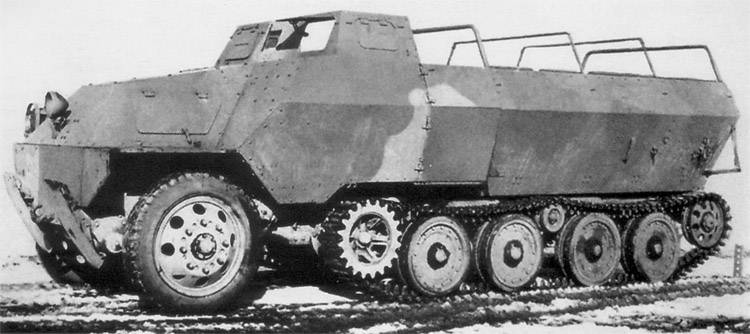
Japanese armored personnel carriers, apparently, were the best of the mass-produced vehicles in their class, although they were produced in small quantities, and “we didn’t have time” for the war.
The first and last sample
In 1940, the Imperial Army decided that it was necessary to sharply intensify the work on the creation of an armored personnel carrier for army units. It was believed that in some areas of China, an all-terrain armored transporter for infantry, from which it is also possible to fight, would be the best means of transport and combat. Generally speaking, the Japanese considered the trucks as the optimal vehicles for the infantry, rather than special vehicles, the latter allowed the troops to maneuver significantly faster than any potential armored personnel carrier and cost less, both in production and in operation. But the destruction of the roads from long battles, the activity of the Chinese in all sorts of partisan raids, and the generally poor condition of the road network in some areas of China, up to its complete absence, increasingly required special machines.
By 1941, Hino’s engineers created the first and last Japanese armored personnel carrier, which was later put into service as Type-1 or Ho-Ha.
The armored personnel carrier was created taking into account the German experience, and possibly the French - “Yellow Cruise” in Asia, the half-tracked Citroen in 1931, thundered all over the world and the French experience was hardly completely ignored. The Japanese M2 Halftrack was first seen by the Japanese in the Philippines, but the Hino engineers could have learned about them before. However, copies of any foreign machine "Ho-Ha" were not, representing the original design, much more successful than the German and French, and, by and large, more successful than the American BTR.
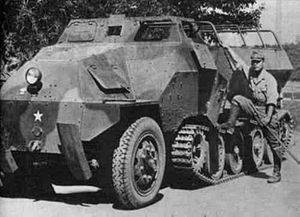
The Japanese could not develop success with the first armored personnel carrier - the war required more and more resources for fleet и aviation, the ground forces remained at least. But "Ho-Ha" and so was a very successful armored personnel carrier.
The car was equipped with 6-cylinder diesel engine of air cooling with 134 horsepower. at 2000 rpm The transmission did not have a long driveshaft, because the drive axle of the track drive was located almost immediately behind the gearbox and was rigidly attached to the body. The caterpillar was long enough to minimize the pressure on the ground (plus compared to the M2), was metal (again plus compared to the M2 and the "French") and did not have horrific needle bearings, and, accordingly, hundreds of lubrication points, like German trucks in numerous "halbkettenfartsoyg" Wehrmacht.
The front axle of the car was ignorant - but considering the length of the track, it didn't matter. But it mattered the presence of a simple independent suspension for each wheel. Easier than the Germans, more profitable off-road than the Americans.
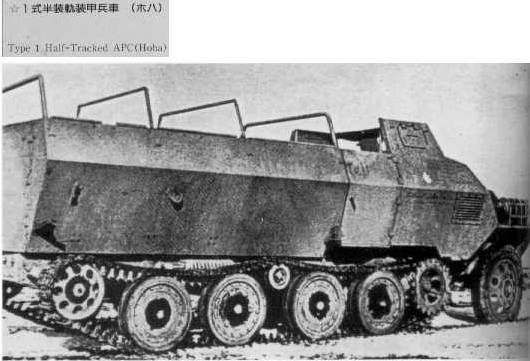
The crew of the car was 1-2 people together with the driver, and 12 landing people, placed along the sides on the benches. Armament - according to some American sources, three tank 7,7 mm machine gun "Type 97", two of which were intended for firing at ground targets forward at an angle to the direction of movement (to the right and to the left), and the third was located in the rear of the troop compartment and was used as an anti-aircraft, without the ability to fire at ground targets. Unfortunately, it is impossible to verify this, a photo of a car with weapons no public access.
The thickness of the armor varied from 8 to 4 millimeters, but at the same time the armor had rational inclinations, which increased the security of the machine. The landing force could use three doors for landing as much - one in each side and swing gates in the stern armor sheet. As with all analogues of those times, the top was open, and a tent was used for weather protection.
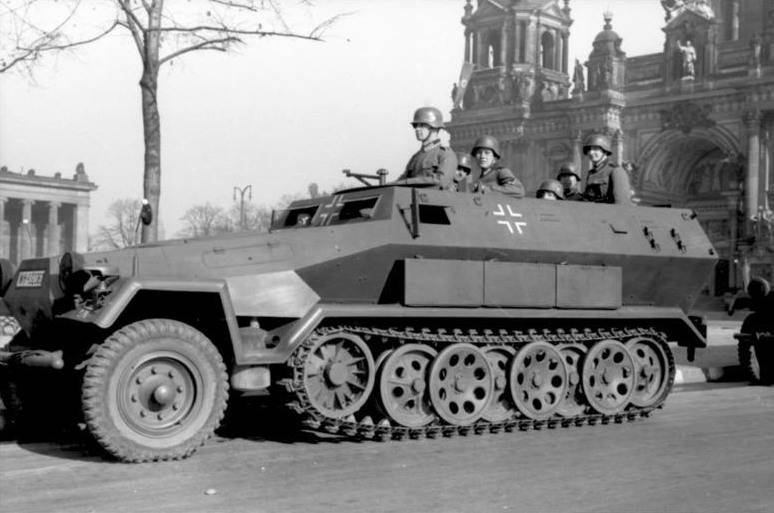
In 1942, the car was put into service, but production was possible to start only in 1944, when the war was already explicitly lost. A number of armored personnel carriers were nevertheless produced, but they did not have a serious impact on the course of the fighting due to the small number and very nature of the ground war in the Pacific. A number of armored personnel carriers were transferred to China. Some more were sent to the Philippines, but few reached the goal, a significant part went to the bottom along with the ships on which they were delivered. A small amount remained on the Japanese islands in the units that had to fight with the American troops. There they were capitulation. After the surrender of Japan, part of the armored personnel carrier was converted into civilian vehicles and was used for restoration work.
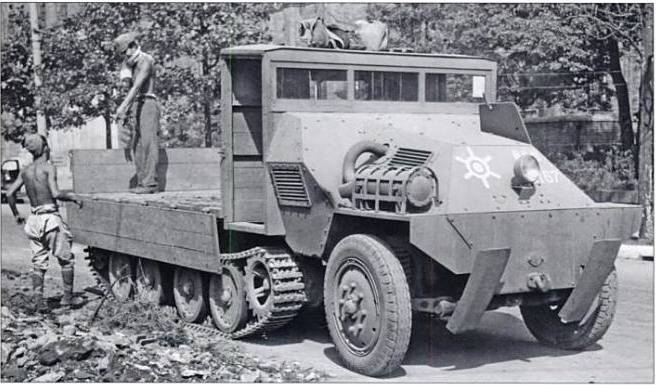
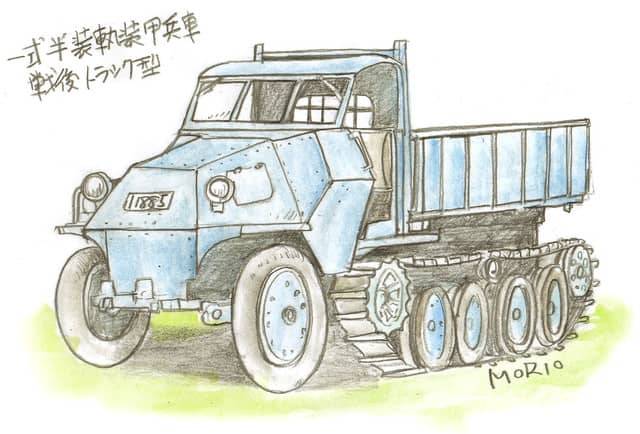
It is not known exactly how many armored personnel carriers were released, but apparently not much.
Unfortunately, in English-language sources there are no more or less detailed descriptions of the car, which leaves "lacunae" in the knowledge of the technical part - so there is no information about whether the BTR was equipped with a double differential, what was his gearbox or time to failure main nodes.
We only know that a similar engine was used on the tracked armored artillery. "Ho-Ki" and showed itself well. We know that the 4-x speed gearbox was most often used on armored vehicles of a similar class in terms of mass and power. We also know that, in principle, Japanese engineers were able to build semi-tracked chassis, such as the “Type 98” “Ko-Hi” was quite a good machine, again in many ways more rational than Western counterparts. In the end, Japan is the only country that massively produced civilian half-tracks for many years after the war (albeit light ones), this is something that says so.
It should be considered that the quality level of the car was more or less acceptable.
What, however, the advantages of this BTR over analogues?
Made to fight
"Ho-Ha" as an armored personnel carrier exceeded its serial counterparts.
First, a better layout. The car has a small distance between the front axle and the drive roller, which, to some extent, reduces the turning radius. It is safe to say that it is no more than that of the American М2 even in the absence of a double differential, but the М2 in itself is a less successful transmission, it is in fact a “White Indiana” truck that was once attached to a crawler truck instead of a rear axle. rubber track caterpillar, at first, very unreliable. The metal caterpillar "Ho-Ha" and "tank" skating rinks look more appropriately on a combat vehicle.
The BTR is roomy enough to accommodate a detachment of infantry with stocks of ammunition and products, if necessary, with guns or other collective weapons. At the same time, something that was not on any of the analogues was ensured - the possibility of dismounting the landing force in the unmanaged zone. The German Sd.kFz 251 had an exit for the assault only in the rear, and the doors were made uncomfortable and, as a rule, the infantry was jumping over the side.
For the American M3, the exit was more convenient, but also only to the stern and through the narrow door for one person. Ho-Ha had three exits, all very conveniently made, while the rear gates were wide enough to quickly disperse the landing in two streams, the side doors were already, but a single fighter with equipment passed through them quickly and without difficulty, and the layout the landing compartment did not obstruct the exit. The "Ho-Ha" landing force could be in the unmanaged zone in any event scenario, except for the shelling of an armored vehicle by the enemy from three sides. In combat, all this could be of great importance.
Although the Ho-Ha frontal armor was thinner than that of the Americans, but the inclination angles partly compensated for this, as before the German armored personnel carrier, corps inclination angles limited the placement of the landing, which was not the case of the Japanese car.
Placing machine guns on “Ho-Kha” (if what we know is true) cannot be considered unsuccessful - when attacking in battle order, armored personnel carriers in a subdivision blocked the space in front of the neighboring machines with their machine guns, at least, the landing force could fire forward course of personal weapons or light machine gun, if any. But the presence of an anti-aircraft machine gun on a special machine was a definite plus as when repelling an impact from the air, and when driving in a city or mountains.
In terms of the range at one refueling station, the Japanese BTR approximately corresponded to the American counterpart, and significantly exceeded the German one.
As already mentioned, the Japanese BTR had the most successful tracked propulsion among all the analogues.
The front independent two-lever spring suspension “Ho-Ha” surpassed the off-road dependent spring suspension of the American armored personnel carrier and, essentially, the suspension on a transverse spring, which the German had. At the same time, there is no reason to believe that the front axle of the American BTR would give it some advantages in maneuverability over the Japanese BTR - a thoughtful tracked “Ho-Kha” course looks preferable to essentially a halftrek car chassis instead of a rear axle compact tracked truck. The only mode where, in theory, an American could turn out to be better - climbing the slope of loose sand. But even that is not a fact, we don’t know exactly how much the Japanese caterpillar thought out the lug, if it was thought out well, then the American car could lose here.
The diesel engine of air cooling is obviously less fire-hazardous than the gasoline engines of competitors, and it is easier to maintain, although the latter is not fundamental. He is also somewhat more resilient in combat. This is also a combat plus for the car.
In terms of power density, the Ho-Ha is quite a bit inferior to the American BTR, and is somewhat superior to the German.
In terms of ease of maintenance, the Japanese BTR seems to be also a champion - at first the Americans actually had problems with the caterpillar drive, which is up to the Germans and their need to lubricate each hinge between the tracks (with needle bearings!) Then this is generally beyond good and evil.
On ho-ho, the “ho-ha” is not inferior to the Sd.kFz 251 and is guaranteed to be superior to the “Americans” - this clearly follows from the length of the tracked trolley on each of the vehicles.
It is also necessary to note the advantage of the Japanese BTR as a governing body over the German one - a nightmarish decision with a reverse tilt of the steering wheel on Sd.kFz 251 is a standard of how not to do. The Japanese BTR controls were much closer to normal car.
All of the above forces Ho-Ha to be considered at least one of the best, and most likely, the best serial armored personnel carrier of the Second World War. It remains only to regret that none of them survived to this day. It would be very interesting to compare it with "classmates".
But something is clear and so.
The bonus - a model made very carefully and close to the original, gives an idea of the appearance of the car better than most of the remaining photos.
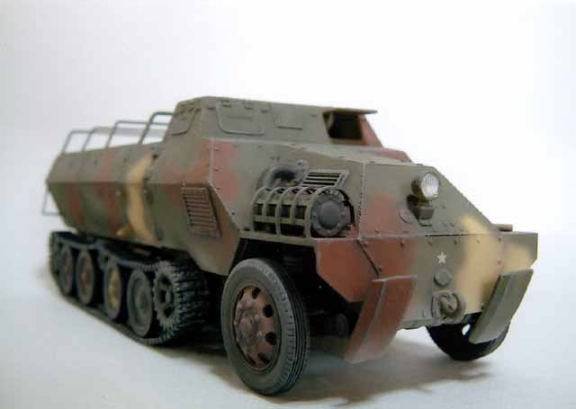
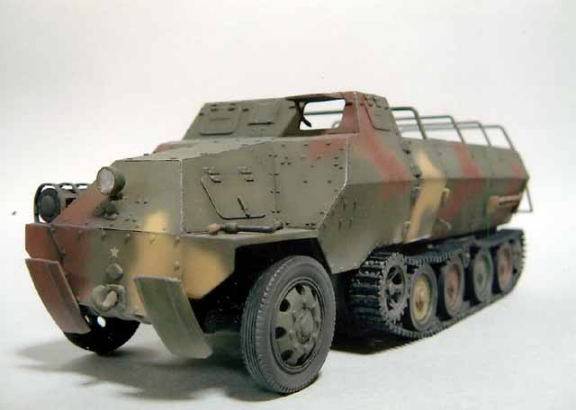
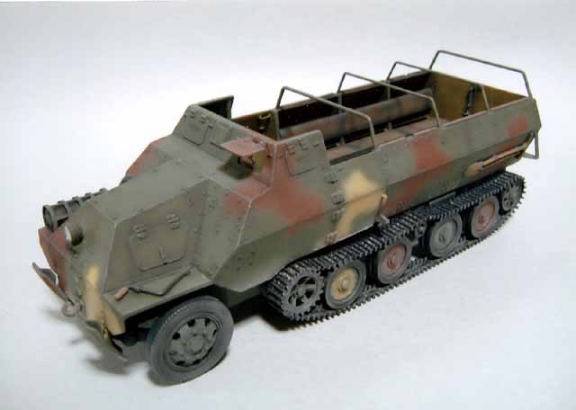
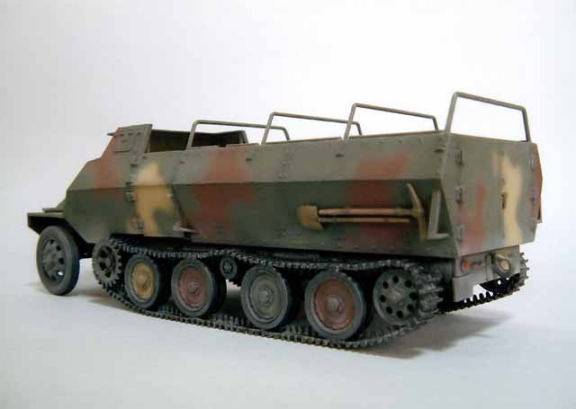
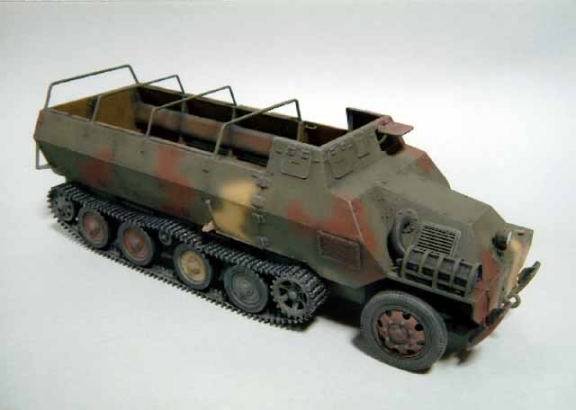
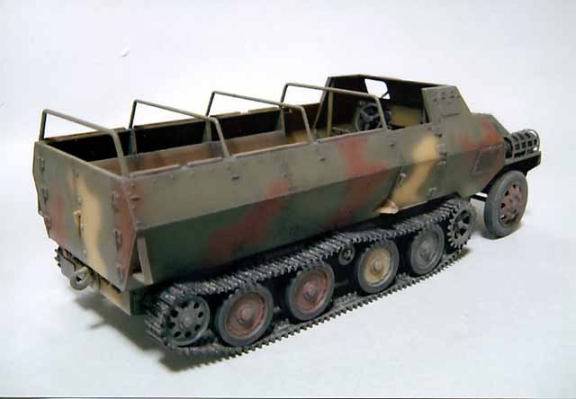
Specifications:
Weight: 9 tons
Dimensions:
Body length, mm: 6100
Width, mm: 2100
Height, mm: 2510
Booking:
Type of armor - steel rolled
Forehead case, mm / deg .: 8
Board of the case, mm / deg .: 4 — 6
Armament:
Machine guns: 3 × 7,7-mm
Mobility:
Engine type - 6-cylinder two-stroke diesel air cooled
Engine power, l. s .: 134 at 2000 rpm
Highway speed, km / h: 50
Cruising on the highway, km: 300
Manufacturer: Hino.
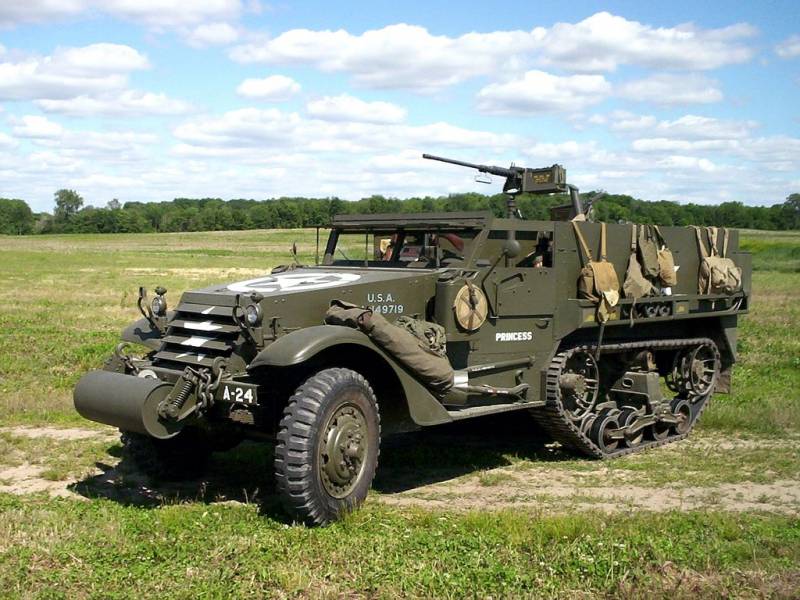
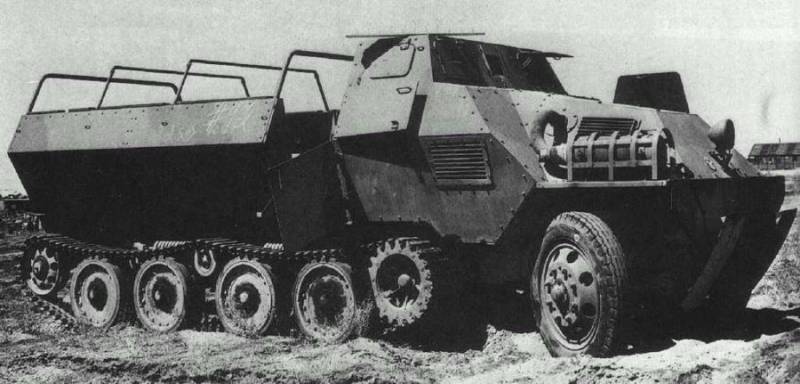
Information